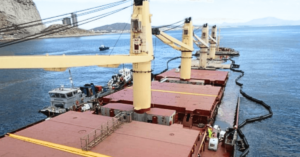
A Year After Deadly Collapse, New Designs Revealed For Replacement Of Baltimore Bridge
February 5, 2025
Chinese Carrier Sues Amazon For $96.4 Million Over Breach Of Contract
February 6, 2025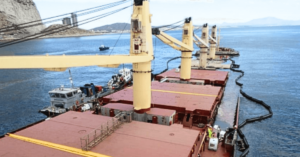
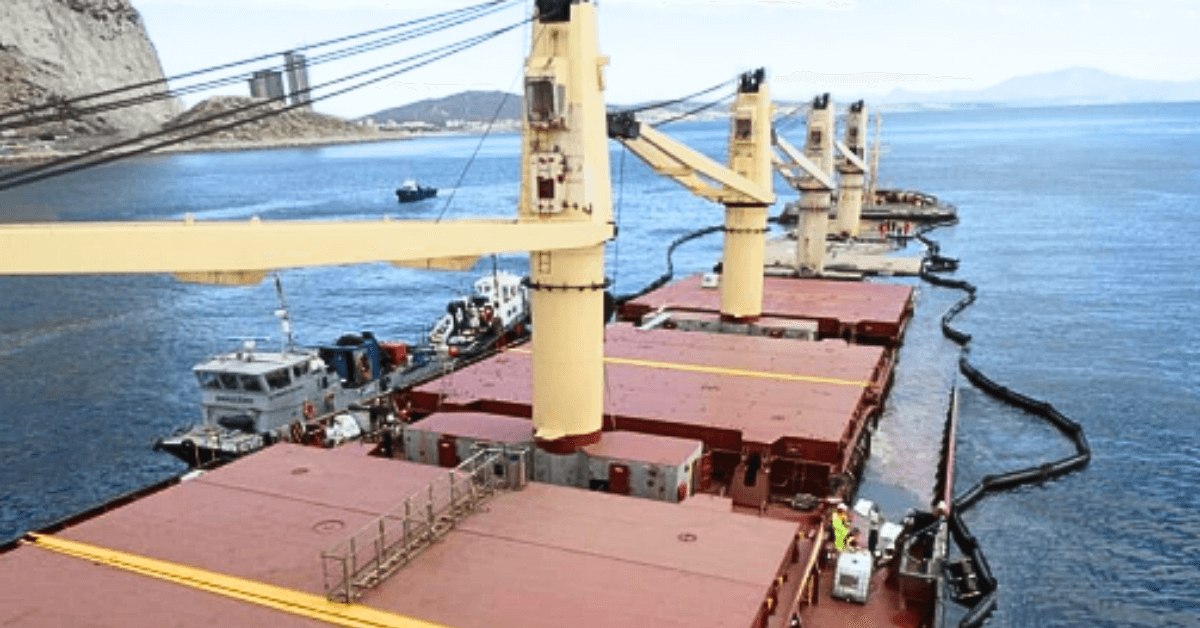
The Gibraltar Maritime Administration has released the official accident investigation report into the collision and loss of the geared bulk carrier OS 35, a 20,947 GT vessel registered in Tuvalu.
The accident occurred on August 29, 2022, as the OS 35 was departing the Bay of Gibraltar anchorage and collided with the LNG carrier Adam LNG.
The collision caused major damage to the OS 35, which eventually led to its controlled beaching east of Gibraltar, where it was dismantled.
The OS 35, loaded with steel rebar, was manoeuvring out of the Western Anchorage after completing bunkering operations. As it moved astern, the vessel’s bow swung to starboard, and the speed astern increased to 3 knots due to the tidal flow and wind.
The ship’s master became concerned that the OS 35 was drifting towards the anchored Adam LNG. Misinterpreting the vessel’s drift conditions, the master ordered the engine to full ahead and the rudder hard to port in an attempt to avoid a collision.
However, this manoeuvre resulted in the OS 35’s starboard side colliding with the bulbous bow of the Adam LNG at a speed of 3 knots.
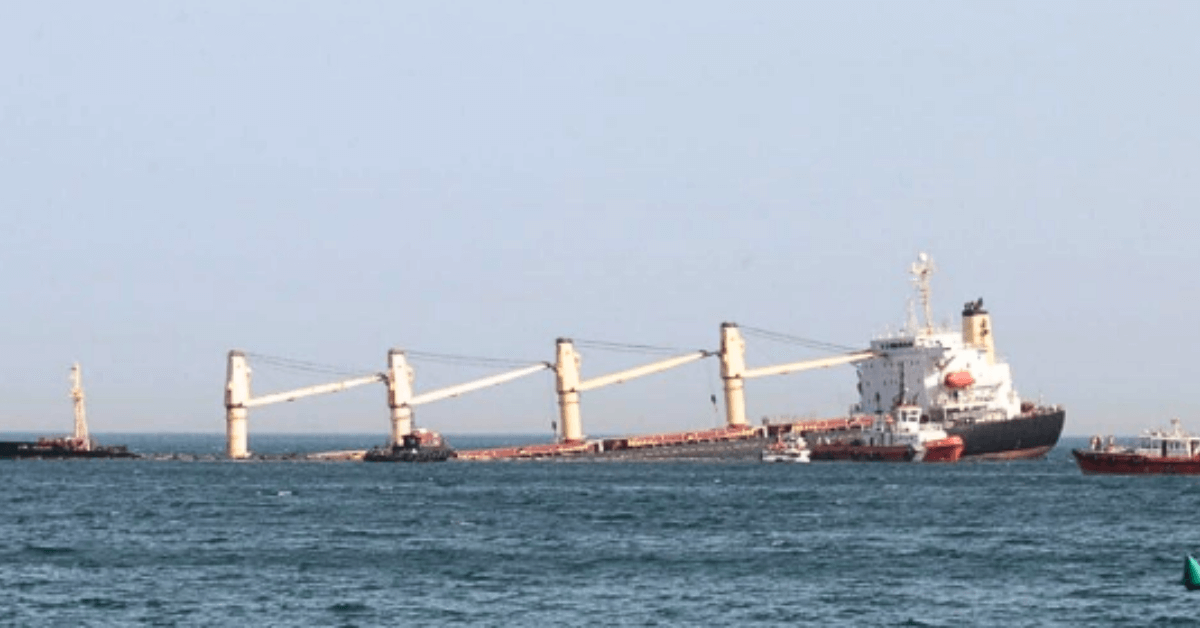
The collision caused a breach in holds 2 and 3 of the OS 35, which quickly flooded with water, and eventually reached hold 1. On the other hand, Adam LNG sustained minor steel damage to its bulbous bow.
After the collision, the Gibraltar Port Authority (GPA) Vessel Traffic Service (VTS) directed the OS 35 to ground to the east of Gibraltar, preventing it from sinking into deeper waters and ensuring it remained within British Gibraltar Territorial Waters (BGTW).
The investigation, conducted under the Gibraltar Merchant Shipping (Accident Reporting and Investigation) Regulations 2012, identified several critical issues contributing to the accident:
Judgement Error: The master of OS 35 made an error in judgement, which went undetected by the bridge team. The master’s perception that the vessel was drifting towards Adam LNG led him to believe a collision was imminent.
Despite ECDIS data showing that the vessel would have passed clear of Adam LNG, the master set the engine to full ahead and the rudder hard to port, which caused the collision rather than avoiding it.
Pilotage: Pilotage is mandatory for vessels entering Gibraltar’s port and anchorage but is not compulsory for vessels departing. The master of the OS 35 did not opt for a pilot, despite the potential benefits of having one aboard.
The report suggests that had a pilot been on board, an alternative manoeuvre would have been recommended, which likely would have avoided the collision.
VTS Monitoring: While the VTS team played an effective role post-collision, their monitoring and intervention before the accident were insufficient. They were unaware of the OS 35’s intended manoeuvre until it was too late to prevent the collision. This lack of awareness hindered their ability to provide timely advice.
Collision Frequency: The report notes that while the frequency of collisions involving departing vessels is low, the potential consequences are high. Collisions such as this one pose serious risks, including the potential for major oil pollution.
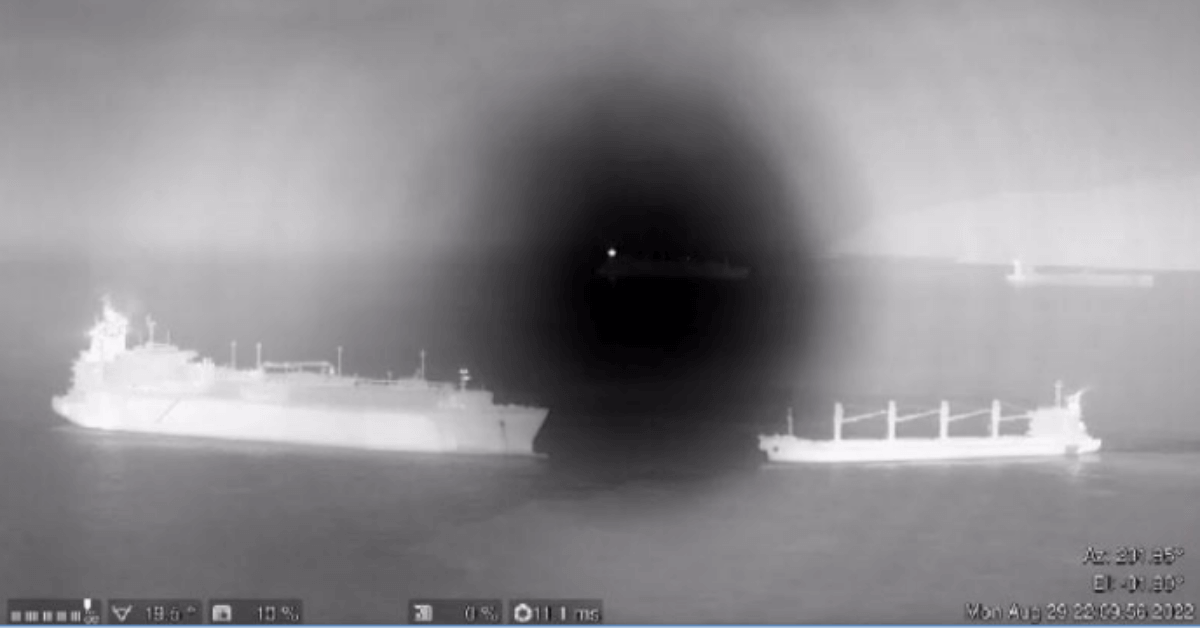
Based on the findings, several recommendations have been made to improve maritime safety and prevent similar incidents from happening in the future:
Compulsory Pilotage: The investigation recommends that Gibraltar consider introducing mandatory pilotage for vessels departing the Western Anchorage, as it is currently only compulsory for vessels entering the port.
Bridge Team Training: The operator of OS 35 has been advised to review and improve bridge team training and procedures, particularly when vessels depart without a pilot on board.
Improved Communication and Monitoring: The Gibraltar Port Authority (GPA) is urged to ensure that VTS provides clearer advice to vessels before granting permission to depart from Western Anchorage. Additionally, better communication about the availability of pilotage should be provided to masters.
Enhanced Safety Measures: The investigation highlights the need for greater vigilance when manoeuvring vessels in the vicinity of other ships, especially in challenging tidal and wind conditions.
Reference: HM Government of Gibraltar
Source: Maritime Shipping News


